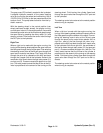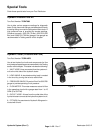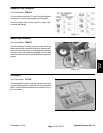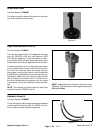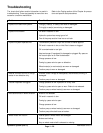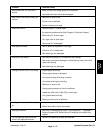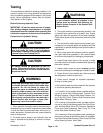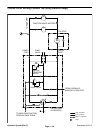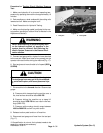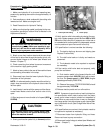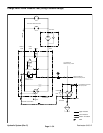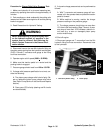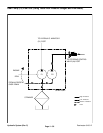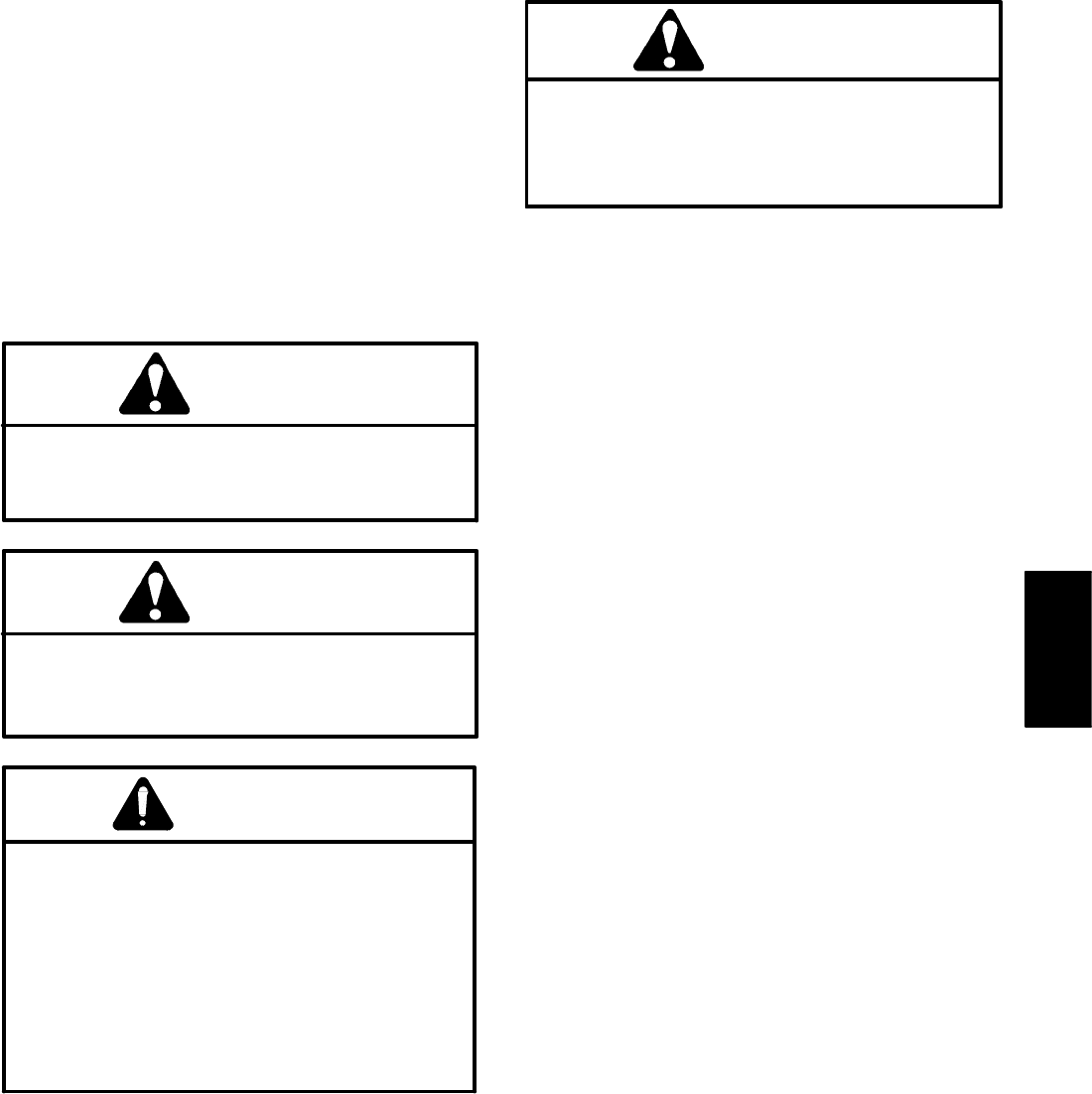
Reelmaster 3100−D Hydraulic System (Rev. C)
Page 4 − 29
Testing
The most effective method for isolating problems in the
hydraulic system is by using hydraulic test equipment
such as pressure gauges and flow meters in the circuits
during various operational checks (See the Special
Tools section in this Chapter).
Before Performing Hydraulic Tests
IMPORTANT: All obvious areas such as oil supply,
filter, binding linkages, loose fasteners, or improper
adjustments must be checked before assuming that
a hydraulic component is the source of the problem.
Precautions for Hydraulic Testing
CAUTION
Failure to use gauges with recommended pres-
sure (psi) rating as listed in test procedures
could result in damage to the gauge and possible
personal injury from leaking hot oil.
CAUTION
All testing should be performed by two (2)
people. One person should be in the seat to oper-
ate the machine, and the other should read and
record test results.
WARNING
Keep body and hands away from pin hole leaks
or nozzles that eject hydraulic fluid under high
pressure. Do not use hands to search for
leaks; use paper or cardboard. Hydraulic fluid
escaping under pressure can have sufficient
force to penetrate the skin and cause serious
injury. If fluid is injected into the skin, it must
be surgically removed within a few hours by a
doctor familiar with this type of injury. Gan-
grene may result from such an injury.
1. Clean machine thoroughly before disconnecting or
disassembling any hydraulic components. Always keep
in mind the need for cleanliness when working on hy-
draulic equipment. Contamination will cause excessive
wear of components.
2. Put metal caps or plugs on any hydraulic lines left
open or exposed during testing or removal of compo-
nents.
WARNING
Before disconnecting or performing any work
on the hydraulic system, all pressure in the
system must be relieved. See Relieving Hy-
draulic System Pressure in the General Infor-
mation section.
3. The engine must be in good operating condition. Use
a phototac when performing a hydraulic test. Engine
speed can affect the accuracy of the tester readings.
Check actual speed of the pump when performing flow
testing.
4. The inlet and the outlet hoses must be properly con-
nected and not reversed (tester with pressure and flow
capabilities) to prevent damage to the hydraulic tester or
components.
5. When using tester with pressure and flow capabili-
ties, open load valve completely in the hydraulic tester
to minimize the possibility of damaging components.
6. Install fittings finger tight and far enough to make
sure that they are not cross−threaded before tightening
them with a wrench.
7. Position tester hoses to prevent rotating machine
parts from contacting and damaging the hoses or tester.
8. Check oil level in the hydraulic tank. After connecting
test equipment, make sure tank is full.
9. Check control linkages for improper adjustment,
binding,or broken parts.
10.All hydraulic tests should be made with the hydraulic
oil at normal operating temperature.
11.If a traction circuit problem exists, consider perform-
ing one or more of the following tests: Traction Circuit
Working Pressure, Charge Relief Valve Pressure, Pis-
ton Pump (P3) Flow & Traction Relief Pressure and/or
Wheel Motor Efficiency Tests.
12.If a cutting circuit problem exists, consider perform-
ing one or more of the following tests: Reel Circuit Pres-
sure, Manifold Relief Valve (R1) Pressure, Reel Motor
Cross−over Relief Pressures, Gear Pump (P1) Flow
and/or Reel Motor Efficiency Tests.
13.If a steering or lift circuit problem exists, consider per-
forming one or more of the following tests: Lift and Steer-
ing Control Valve Relief Pressure, Gear Pump (P2) Flow
and/or Steering Control Valve Tests.
Hydraulic
System



